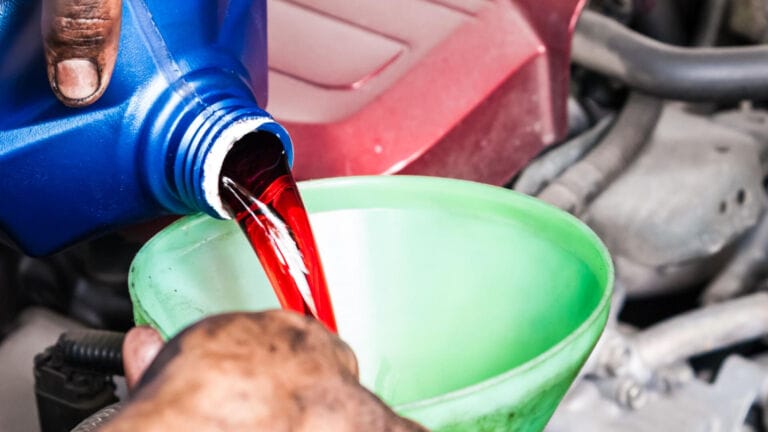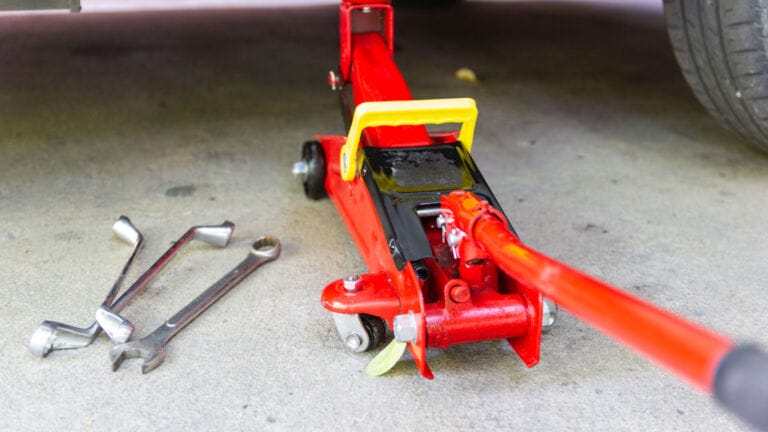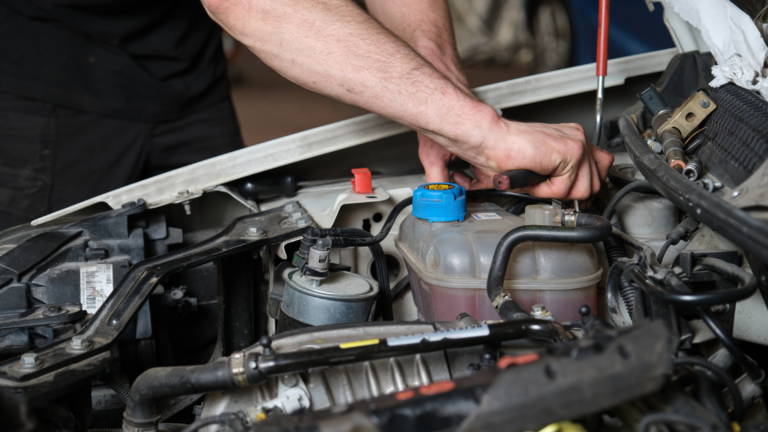5 Essential Automotive Oil, Fluids, and Lubricants
Imagine your car as a well-oiled machine, quite literally! Like how we need water to keep us going, our cars rely on a concoction of fluids and lubricants to stay in tip-top shape.
Think of these fluids as the lifeblood of your vehicle, flowing through its veins and ensuring everything runs smoothly. Each plays an important role in keeping your ride purring like a contented kitten, from engine oil to transmission fluid.
Now, I know what you’re thinking – “But isn’t oil just oil?” Oh, my friend, if only it were that simple! We’re not just talking about your run-of-the-mill lubricants here. No, no! There’s a whole buffet of options, from engine oil to coolant, each with its own strengths and quirks.
Ever heard the phrase “knowledge is power”? Well, in the world of automotive maintenance, it’s more like “knowledge is prevention.” Understanding the ins and outs of these fluids can save you from a world of trouble down the road. After all, prevention is better than a costly repair bill, right?
So, buckle up and get ready to learn everything you need to know about automotive oil, fluids, and lubricants, whether you’re a seasoned grease monkey or a newbie just dipping your toes into the world of car care. Trust me, your car will thank you for it later!
5 Essential Automotive Oil, Fluids, and Lubricants
Engine Oil
A car’s engine is a bustling metropolis, with thousands of moving parts working harmoniously. But what keeps this bustling city from grinding to a halt?
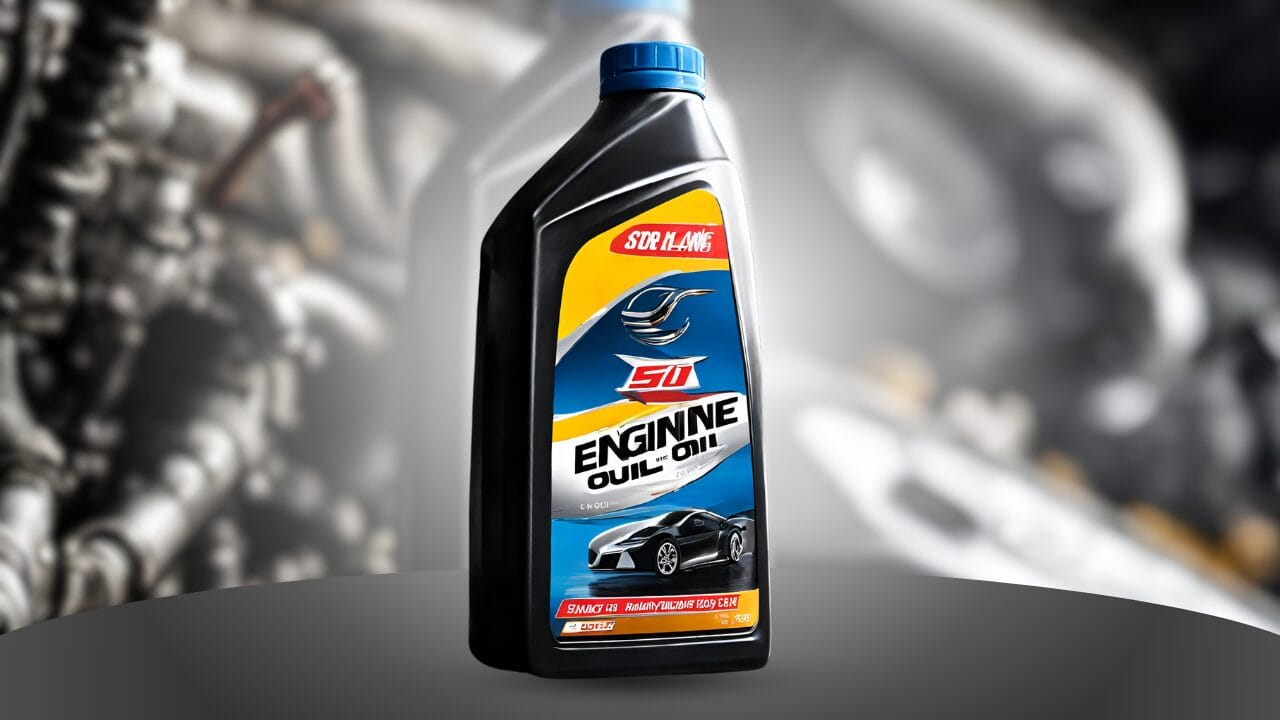
Engine oil is the multitasker specially designed to lubricate, cool, and cleanse the engine to ensure it operates smoothly. It protects and shields delicate engine components from wear and tear, friction, and corrosion. It has cleansing properties that trap dirt, debris, and contaminants and whisk them away to the oil filter. It can also act as a coolant by dissipating heat generated during combustion.
Now, when it comes to engine oil, we’re not just talking about any old liquid; a range of options are there to fit your car’s engine. What are they?
Let’s learn about Four common engine oils.
Types Of Engine Oil
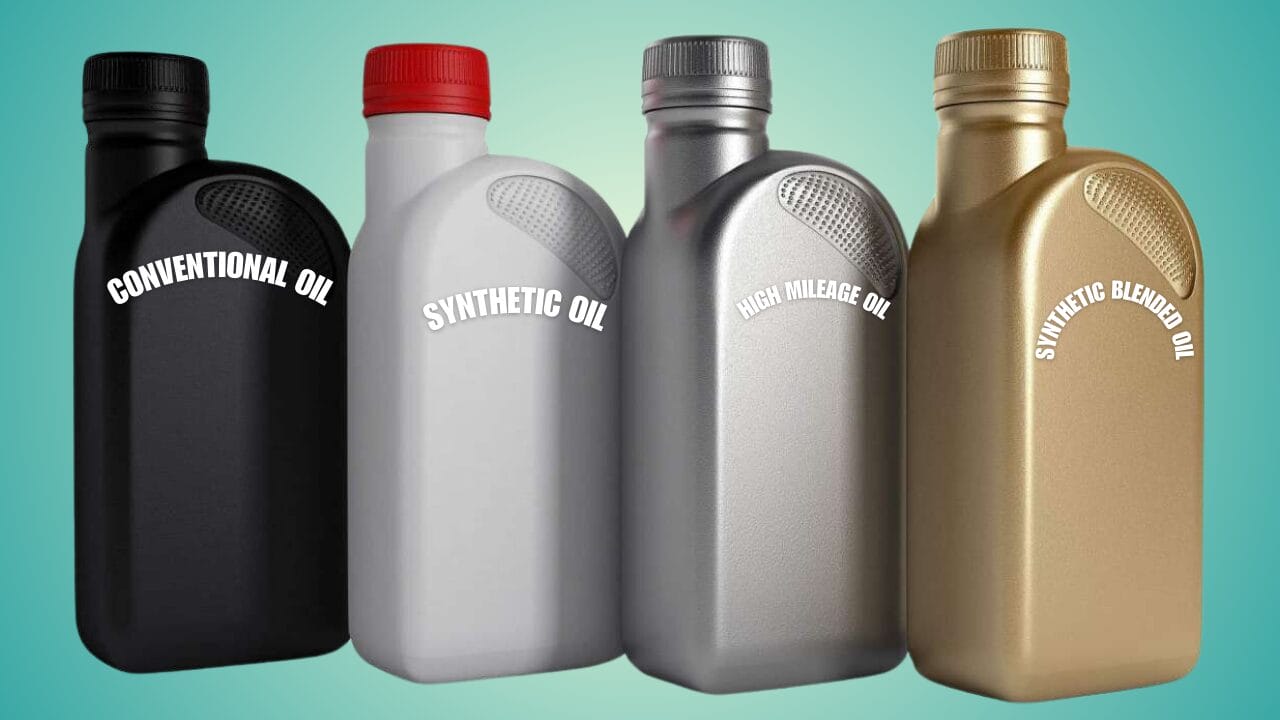
- Conventional Oil: The tried-and-true classic; derived from crude oil and undergoes minimal refinement. It’s the go-to choice for budget-conscious drivers and vehicles with modest performance needs. While it may lack the bells and whistles of synthetic counterparts, conventional oil does the job without breaking the bank.
- Synthetic Oil: It is the high-performance athlete of the bunch. It is engineered with excellence to withstand the rigors of modern engines, offering enhanced performance, durability, and longevity. Its molecular structure provides better viscosity control, enhanced thermal stability, and improved resistance to breakdown, making it ready to tackle any challenge that comes its way.
- High Mileage Oil: Designed specifically for vehicles with well-loved engines, high mileage oil is formulated with additives to rejuvenate and protect engines with over 75,000 miles on the odometer. It helps combat common issues associated with aging engines, such as oil consumption, leaks, and diminished performance while providing enhanced lubrication and wear protection.
- Synthetic Blended Oil: Blended oil offers the best of both worlds, combining the reliability and affordability of conventional oil with the performance perks of synthetic. It offers improved protection and longevity while remaining budget-friendly for everyday drivers. Blended oil is the Goldilocks option for those seeking a middle ground between cost and performance.
Compatibility
Mixing two different oils is not recommended. For example, you shouldn’t even mix two same-brand but different-viscosity oils, such as mixing 5w30 and 5w40 is forbidden. And using 5w40 instead of 5w30 is also avoidable due to severe risks.
Importance of Regular Oil Changes
Just like a spa day rejuvenates the soul, regular oil changes refresh your engine and ensure it operates at peak performance levels. Over time, engine oil gets dirty and contaminated, leading to reduced lubrication, increased friction, and potential damage.
How often should you change your oil?
While the old rule of thumb of every 3,000 miles might not apply to modern vehicles, checking your owner’s manual for the manufacturer’s recommended intervals is crucial. Factors like your driving habits, environmental conditions, quality, schedule oil changes, and vehicle age also play a role.
Remember, staying proactive is key to extending your engine’s lifespan and avoiding expensive repairs.
Transmission Fluid
Transmission fluid lubricates the transmission system’s moving parts to glide effortlessly, prevents premature wear and tear, and reduces friction. During transmission operation, it dissipates heat, ensuring a long transmission life and preventing overheating.
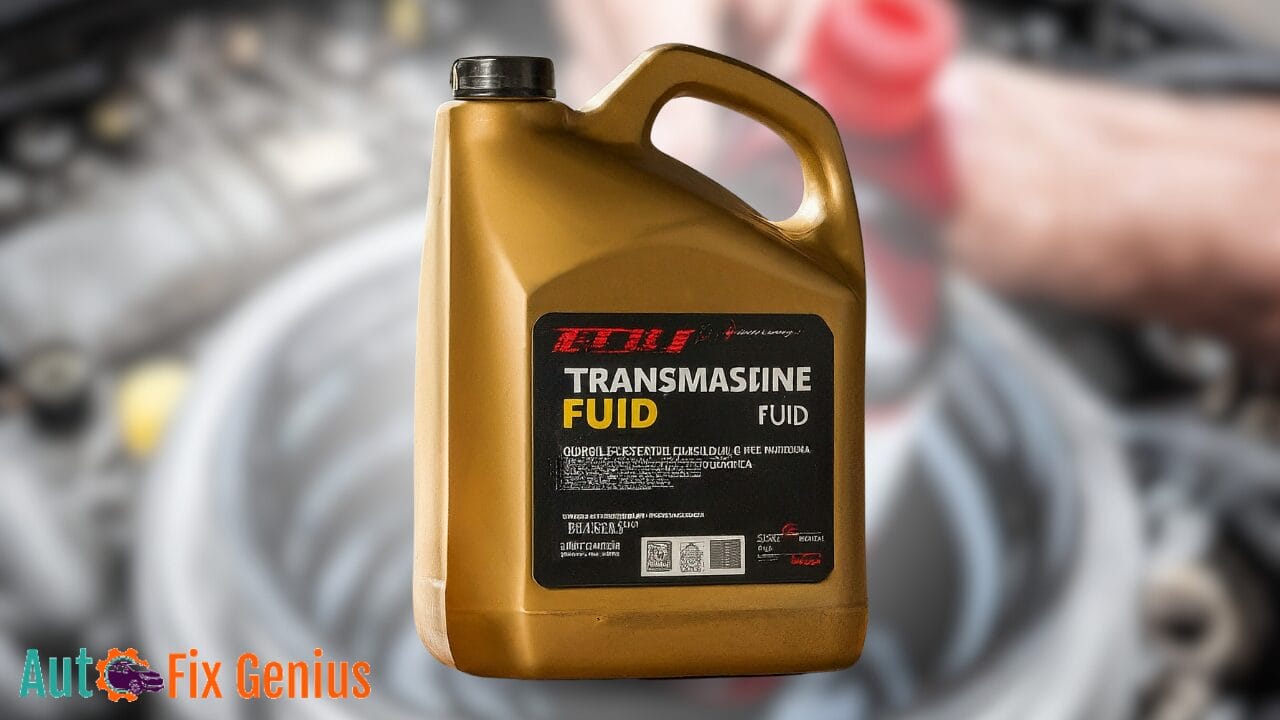
Transmission fluid maintains the integrity of seals and gaskets within the transmission system. This helps prevent leaks and ensures the transmission remains properly sealed, preserving its functionality and preventing fluid loss.
Moreover, transmission fluid doubles as a cleaning agent, capturing and suspending contaminants like dirt and debris. This prevents them from damaging internal components, ensuring your transmission runs smoothly.
Types Of Transmission Fluid
When it comes to transmission fluids, there are a couple of key players on the scene: automatic transmission fluid (ATF) and manual transmission fluid (MTF). But wait, there’s more!

We also have synthetic transmission fluid and specialty blends tailored for specific transmission types, such as CVT and dual-clutch models. Knowing which one your car needs is like having the right tool for the job—it’s essential for keeping your ride running smoothly.
- Automatic Transmission Fluid (ATF)
ATF is designed for fancy automatic transmission cars, but if you own a more modern manual car, you can use it, too. It lubricates gears and helps operate the torque converter, clutch friction, and valve body.
- Manual Transmission Fluid (MTF)
For old-school manual transmission cars, MTF is the go-to fluid. However, older vehicles may require heavier fluids, like 75W to 140W, and newer models often opt for automatic fluid even in manual transmissions.
Compatibility
Using the wrong transmission fluid type is like trying to fit a square peg into a round hole—it just won’t work. ATF is specifically designed for automatic transmissions, while MTF is tailored for manual transmissions. Mixing them up is a recipe for disaster, my friend, even if it’s the same brand but with different properties. A great example is that you can’t mix Dexron iii and Dexron vi, nor can you use one instead of another. It can lead to sluggish performance, gear slippage, and even irreversible damage to your transmission. And if you talk about using it for other components, like the transmission fluid in the power steering system, that is also unsafe. If you accidentally put transmission fluid in the power steering, flush it immediately or face severe consequences.
Synthetic vs. Traditional Transmission Fluid
The showdown between synthetic and traditional transmission fluids is a tale of old meets new. Traditional fluid, born from crude oil and refined to fit specific vehicle needs, meets its match in synthetic fluid, crafted through advanced chemical reactions.
But here’s the kicker: synthetic fluid has a leg up. Even when temperatures soar, it’s less prone to breakdown, oxidation, and thinning. Think of it as the cool-headed hero in scorching heat, ensuring your transmission stays smooth and steady.
So, when it’s time to choose between the two, remember – with synthetic fluid, you’re not just getting modern performance; you’re getting peace of mind for the road ahead.
How Often You Should Change Transmission Fluid
Usually, you should change transmission fluid after 30,000-50,000 miles of riding, but it can vary depending on transmission type. Check your manual to learn about your transmission’s needs. And don’t forget to check the fluid level every one or two months or immediately if needed; you can lose it due to a leak or other reasons.
Brake Fluid
Brake fluid is the hydraulic fluid that flies under the radar to keep you safe on the road. It’s a non-compressible liquid that ensures your brakes respond swiftly, allowing you to navigate traffic, conquer winding roads, and stop on a dime.

With every press of the brake pedal, the force from your foot is transmitted to the brake calipers or wheel cylinders. It’s like the messenger, carrying your command to stop from the pedal to the wheels.
Types of Brake Fluid:
There are several types of brake fluid. They have different boiling points, viscosity ratings, and compatibility with different braking systems. However, based on their chemical compositions and performance specifications, they are classified into two types. The most common two are glycol-based and silicon-based brake fluid. One more thing: clutch fluid is the same as brake fluid; it just works in two different systems. Let’s discuss them in detail.
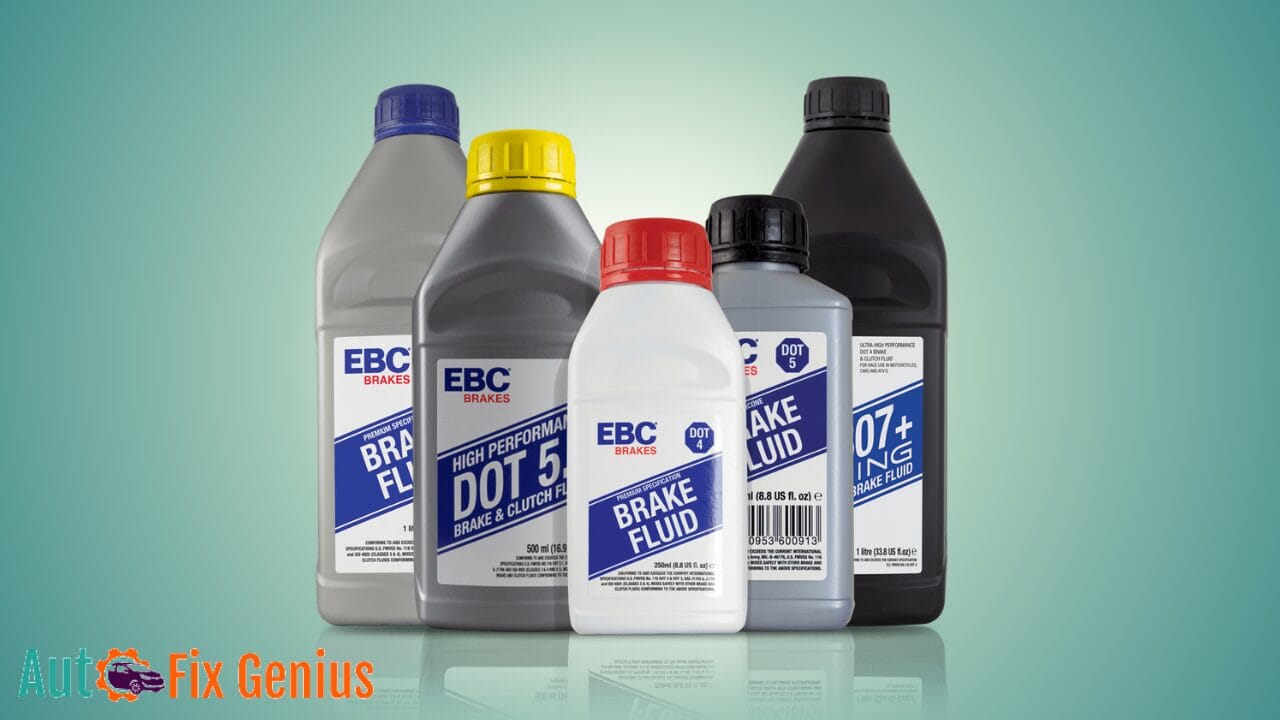
- Glycol-Based Brake Fluid:
Glycol-based brake fluid, such as DOT 3, DOT 4, and DOT 5.1, is the most common type used in automotive applications. It’s formulated from glycol ethers and borate esters, offering excellent lubrication and anti-corrosion properties. Glycol-based fluids have high boiling points, making them suitable for high-performance and heavy-duty braking systems.
They are compatible with most brake system components. They are hygroscopic, meaning they absorb moisture from the air over time, which can lead to decreased performance if not regularly flushed and replaced.
- Silicone-Based Brake Fluid:
Silicone-based brake fluid, often called DOT 5, is less common and typically used in specialized applications. Unlike glycol-based fluids, silicone-based fluids do not absorb moisture, making them ideal for vehicles that are stored for long periods or exposed to extreme temperature fluctuations. They also have a higher boiling point than glycol-based fluids, improving performance under severe braking conditions. However, silicone-based fluids are incompatible with most brake system components designed for glycol-based fluids and can cause swelling and deterioration of seals and hoses if mixed. Therefore, using silicone-based fluid only in systems specifically designed for it is essential to avoid mixing it with glycol-based fluids.
Compatibility:
Brake fluid is not a one-size-fits-all solution. Because brake fluid doesn’t circulate like other fluids. Using the brake fluid specified for your vehicle’s braking system is essential to ensure optimal performance and safety. However, you can use brake fluid in hydraulic jacks and other applications where hydraulic oil is usable. Mixing different types and brands of brake fluid can lead to brake system failure, so it’s best to stick with the manufacturer’s recommendations.
When to Refill Brake Fluid:
Typically, the brake fluid changing time is after 45,000 miles or every three years. However, you need to check the brake fluid level with a dipstick during routine maintenance intervals or whenever you notice a decrease in braking effectiveness.
Power Steering Fluid
Power steering fluid is a specialized hydraulic fluid designed to transmit force from the power steering pump to the steering gear or rack. It makes it easier for the driver to turn the steering wheel with minimal effort. When the driver turns the steering wheel, the power steering pump pressurizes the fluid, which is then directed to the steering gear or rack. This pressurized fluid helps move the steering components, making it easier to turn the wheels, especially at low speeds or when parking.
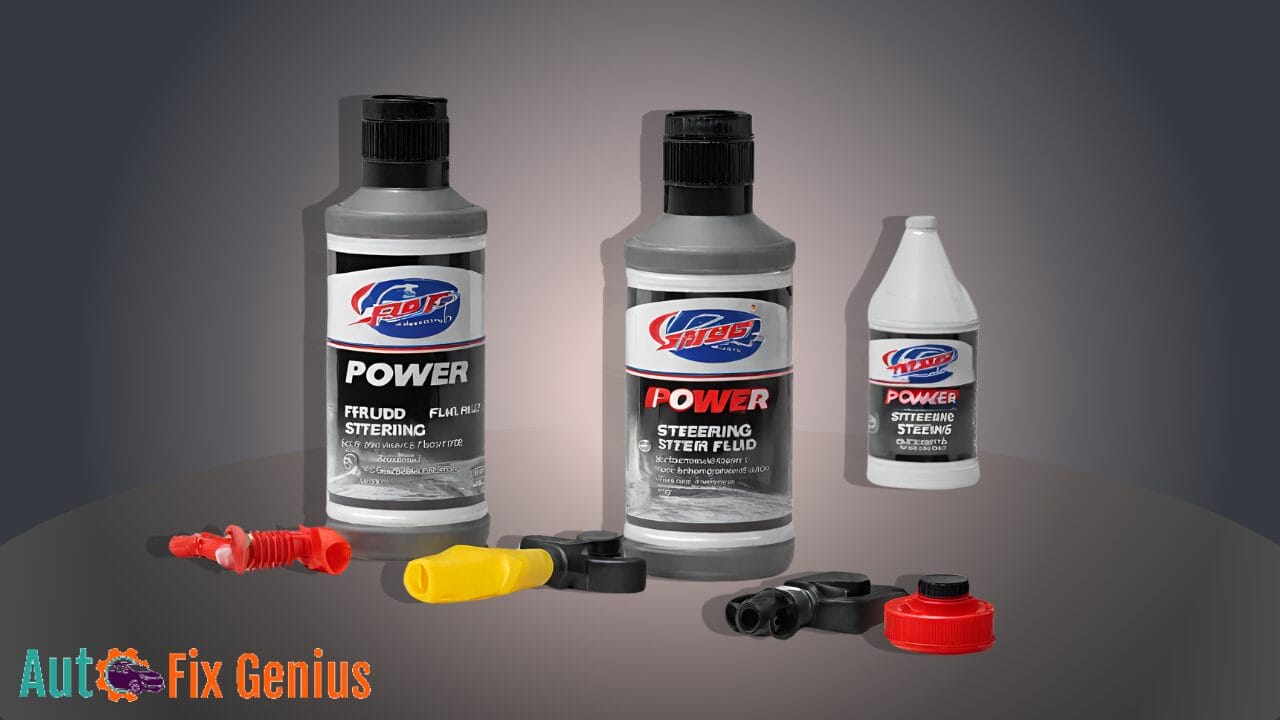
Types of Power Steering Fluid:
There are two main types of power steering fluid: mineral oil-based and synthetic-based. Mineral oil-based fluids are more common and are typically labeled as “power steering fluid” or specified by the vehicle manufacturer. On the other hand, synthetic-based fluids offer enhanced performance and durability, particularly in extreme temperatures. It’s essential to use the type of fluid your vehicle manufacturer recommends to ensure compatibility and optimal performance.
Compatibility Considerations:
Using the wrong type of power steering fluid can decrease performance, increase wear and tear on steering components, and potentially damage the system. Always consult your vehicle’s owner’s manual or manufacturer recommendations to determine the correct fluid for your system.
When to Refill Power Steering Fluid:
Power steering fluid mostly needs changes between 50,000-75000 miles ride. But don’t depend on the miles only, check fluid level during routine maintenance intervals or whenever you notice symptoms of low fluid levels, such as difficulty turning the steering wheel or a whining noise when turning. If the fluid appears low or dirty, it may be time to refill or flush and replace the fluid to ensure the continued smooth operation of your power steering system.
Coolant
Coolant, also known as antifreeze, is a specially formulated liquid (50/50 water and antifreeze). As your engine runs, it generates an immense amount of heat, which, if left unchecked, can lead to engine damage or failure. Coolant circulates through the engine and absorbs heat, carrying it to the radiator, where it is cooled before recirculating. It’s like the body’s internal thermostat, ensuring your engine stays within its optimal operating temperature range, regardless of external conditions. Coolant also contains corrosion inhibitors to protect engine components from rust and corrosion.

Types of Coolant:
Several types of coolant are available, each formulated for specific engine types and operating conditions. The most common types include ethylene glycol-based coolants and propylene glycol-based coolants. Ethylene glycol-based coolants are the traditional choice and offer excellent heat transfer properties, while propylene glycol-based coolants are less toxic and environmentally friendly. Using the coolant your vehicle manufacturer recommends is essential to ensure compatibility and optimal performance.
Compatibility
Using the wrong coolant or accidentally putting water in the coolant can lead to chemical reactions, which may cause clogs, corrosion, or damage to engine components. So, always consult your vehicle’s owner’s manual or manufacturer’s recommendations to determine the correct type of coolant.
When to Refill Coolant:
You should refill your engine radiator with fresh coolant after 20,000 miles of riding. But it’s better to check the coolant level when you do regular maintenance or if you notice any low coolant signs. If the coolant level is low due to a coolant leak or the coolant appears dirty or contaminated, it may be time to refill or flush. And don’t forget to wait before putting coolant, opening a hot reservoir cap isn’t advisable.
Can You Mix Different Oils
Mixing different types of fluids in your vehicle can be like playing a dangerous game of automotive roulette, with potentially costly consequences. Each fluid serves a specific purpose and is formulated with unique additives and properties tailored to its intended function. Here’s what you need to know about mixing different oils and using different fluids instead of designed ones:

Engine Oil:
Mixing different types or grades of engine oil, such as conventional and synthetic, can alter the oil’s viscosity and performance characteristics, potentially leading to reduced lubrication, increased wear, and engine damage. It’s best to stick with the type and viscosity grade recommended by your vehicle manufacturer.
Brake Fluid:
Mixing different types of brake fluid, such as DOT 3, DOT 4, and DOT 5.1, can lead to chemical reactions, reduced braking performance, and damage to brake system components. Similarly, using brake fluid in place of power steering fluid or transmission fluid can result in system failure and safety hazards.
Power Steering Fluid:
Using power steering fluid in place of transmission fluid or vice versa can cause damage to the respective systems due to differences in viscosity, additives, and compatibility with system components. It’s essential to use the fluid specified by your vehicle manufacturer for each system to ensure optimal performance and longevity.
Transmission Fluid:
Mixing different types of transmission fluid, such as automatic transmission fluid (ATF) and manual transmission fluid (MTF), can lead to transmission slippage, shifting issues, and premature wear. Similarly, using transmission fluid instead of power steering fluid or vice versa can damage system components and compromise performance.
Coolant:
Mixing different types of coolant, such as ethylene glycol-based and propylene glycol-based, can result in chemical reactions, corrosion, and damage to cooling system components. It’s crucial to use the coolant recommended by your vehicle manufacturer and to flush and replace coolant at specified intervals to maintain optimal performance and corrosion protection.
In summary, while mixing or substituting fluids in a pinch may be tempting, doing so can severely affect your vehicle’s performance, safety, and longevity. It’s always best to use the fluid specified by your vehicle manufacturer for each system and to follow recommended maintenance intervals to ensure trouble-free operation. Consult your owner’s manual or a qualified mechanic for guidance.
Best Practices and Maintenance Tips
Regular Inspection and Maintenance Schedule:
Regular inspection and maintenance of your vehicle’s fluids are essential for ensuring optimal performance and longevity. Schedule routine checks of fluid levels, including engine oil, coolant, brake fluid, power steering fluid, and transmission fluid. Look for signs of leaks, contamination, or abnormal fluid levels, and address any issues promptly to prevent potential damage or breakdowns.
Using Manufacturer Recommended Fluids:
When it comes to selecting fluids for your vehicle, always follow the manufacturer’s recommendations. Using fluids that meet or exceed the specifications outlined in your owner’s manual ensures compatibility and optimal performance. Avoid generic or aftermarket fluids that may not meet the same quality standards, which can lead to potential issues and void warranties.
Proper Disposal of Used Fluids:
Proper disposal of used fluids is crucial for environmental protection and safety. Never dispose of automotive fluids, such as engine oil, coolant, brake fluid, or transmission fluid, by pouring them down drains or onto the ground. Instead, take them to a designated recycling center or service facility that accepts used automotive fluids for proper disposal. Many auto parts stores and repair shops offer recycling services for used fluids.
Monitoring Fluid Levels and Quality:
Regularly monitor fluid levels and quality to ensure they remain within the recommended parameters. Check engine oil for proper viscosity, color, and clarity, coolant for proper concentration and contamination, brake fluid for proper level and clarity, and transmission fluid for proper level and condition. Address any abnormalities promptly to prevent potential issues and maintain optimal vehicle performance.
Adhere to these best practices and maintenance tips to ensure your vehicle’s fluids are properly managed and maintained, promoting reliability, safety, and longevity. With proper care and attention, your vehicle’s fluids will continue supporting smooth operation and enjoyable driving experiences for miles.
Conclusion:
From engine oil to brake fluid, power steering fluid to coolant, we’ve explored the role of automotive fluids and their importance in maintaining your vehicle’s performance, reliability, and safety. But this is not the end, there’s always more to learn. I encourage you to explore related topics in greater detail through interlinked articles on our platform. Whether you’re curious about specific fluid types, maintenance techniques, or troubleshooting tips, AutoFixGenius offers valuable insights to help you become a more informed and empowered vehicle owner.


